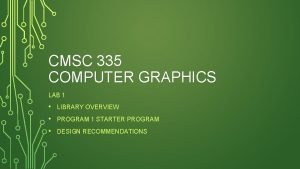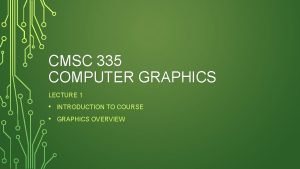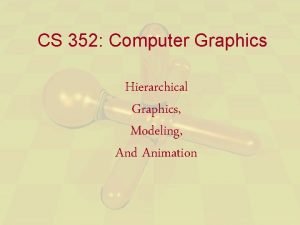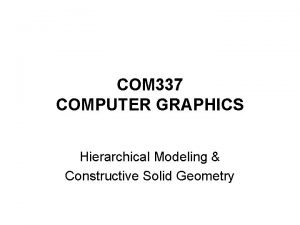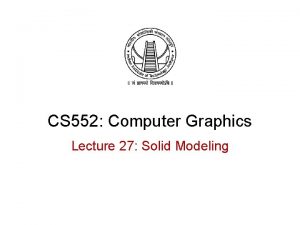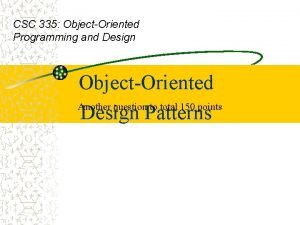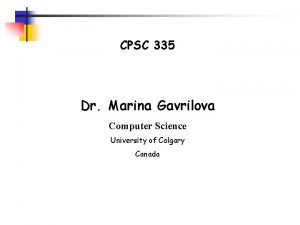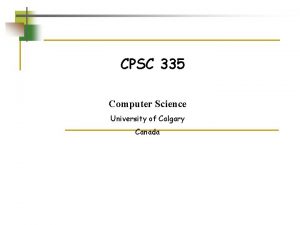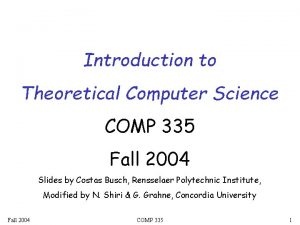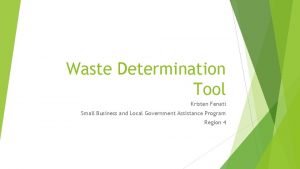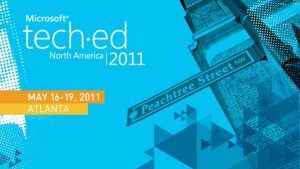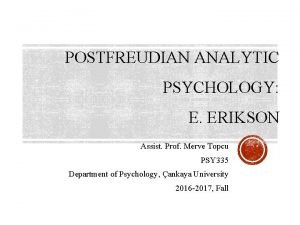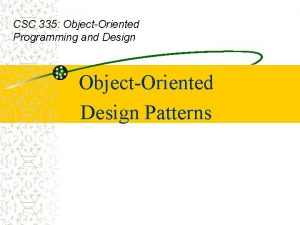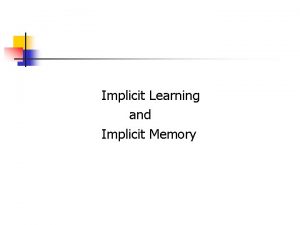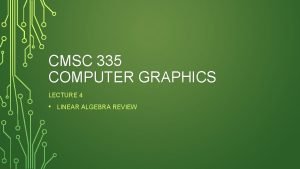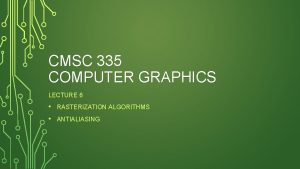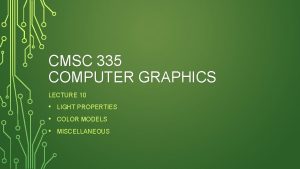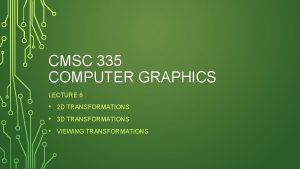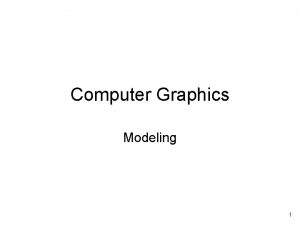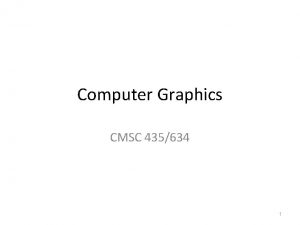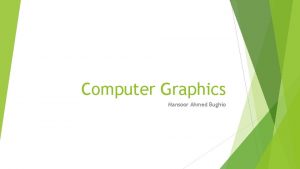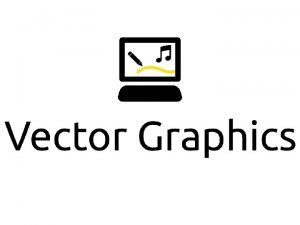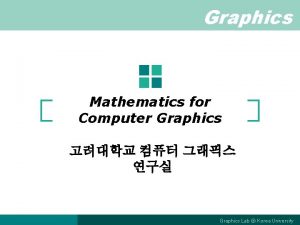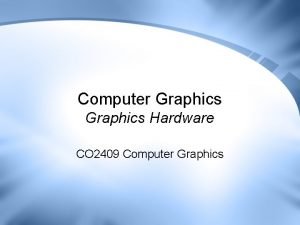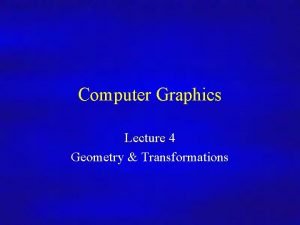CMSC 335 COMPUTER GRAPHICS LECTURE 12 IMPLICIT MODELING



















- Slides: 19

CMSC 335 COMPUTER GRAPHICS LECTURE 12 • • IMPLICIT MODELING • PREVIEW OF TESSELLATION PROCEDURAL MODELING

IMPLICIT MODELING

IMPLICIT MODELING •

BLOBBY OBJECTS • Blobby objects are defined as distribution functions over space • An example would be defining a ball by a distance from a point scaled by that distance (think of heat radiating from the sun) • Summation or other blending techniques combine many primitive blobs into a model

CONSTRUCTIVE SOLID GEOMETRY • The process of generating a new object from two objects using a set operation is called constructive solid geometry • Union, intersection, and difference allow for various complex models to be formed • Warping is also allowed of shapes in the form of twisting, tapering, or bending

PRECISE CONTACT MODELING • Precise contact modeling is a method for deformation and contact modeling while maintaining continuity

BLOB TREE • Most of the implicit modeling approaches, including constructive solid geometry allow for combinations in a tree hierarchy to represent very complex shapes

SPACE PARTITIONING • In order to render an implicit model, it needs to be approximated by polygons • Space partitioning algorithms facilitate this • Example algorithm: (1) divide the space into a grid of voxels, (2) determine voxels intersecting model, (3) convert voxels into tetrahedrons • Extra data structures • • Binary space partitions Octtrees

PROCEDURAL MODELING

PROCEDURAL MODELING • Procedural modeling can refer to the algorithmic generation of shape data • Many methods exist and are widely used

SWEEPING ALGORITHMS • Objects with symmetry can often be specified by a 2 D shape moving through (sweeping) space • Using a parametric representation, we can generate vertex/triangle information from this • Example of a sphere and torus in Ch 6 of Computer Graphics Programming

GENERATIVE GRAMMARS • Grammars are descriptions of languages • Generative grammars describe how to expand language constructs into an infinite number of possible sentences • Shape grammars extend this idea to shapes • Applies randomness to the logical expansion rules

FRACTALS • Self-similar subset of space, exhibiting a repeating pattern at smaller and smaller scales • Defined recursively

RANDOMIZED APPROACHES • Many algorithms exist to generate random properties • Allows variance in set of generated shapes • Smoothing can become an important aspect to post process the shape

TESSELLATION

TESSELLATION OVERVIEW • Tessellation refers to the generation of a large number of primitives for rendering complex shapes • Related to the concept of tiling a flat surface with a pattern

TESSELLATION SHADER ARCHITECTURE Tessellation Control Shader • The first and third stage of tessellation is programmable • The second stage is Tessellator Tessellation Evaluation Shader synonymous to rasterizing, in that it is a fixed algorithm

TESSELLATION CONTROL SHADER • Configures what type of grid of triangles the tessellator will generate for the patch • Executes once per vertex to allow additional computations to be done per vertex (or pass data through)

TESSELLATION EVALUATION SHADER • Allows the manipulation of the grid into a specific shape • Executes once per vertex produced by the tessellator
 Cmsc 335
Cmsc 335 Cmsc 335
Cmsc 335 Hierarchical modeling in computer graphics
Hierarchical modeling in computer graphics Hierarchical modeling in computer graphics
Hierarchical modeling in computer graphics Solid examples
Solid examples Graphic monitor and workstation in computer graphics
Graphic monitor and workstation in computer graphics Lcd working principle ppt
Lcd working principle ppt Helen c. erickson
Helen c. erickson Relational modeling vs dimensional modeling
Relational modeling vs dimensional modeling 01:640:244 lecture notes - lecture 15: plat, idah, farad
01:640:244 lecture notes - lecture 15: plat, idah, farad Csc 335
Csc 335 Cpsc 335
Cpsc 335 Cpsc 335
Cpsc 335 Comp 335
Comp 335 30 tac 335
30 tac 335 30 tac 335
30 tac 335 30 tac 335
30 tac 335 Sim 335
Sim 335 Psy 335 purdue
Psy 335 purdue Csc 335
Csc 335
